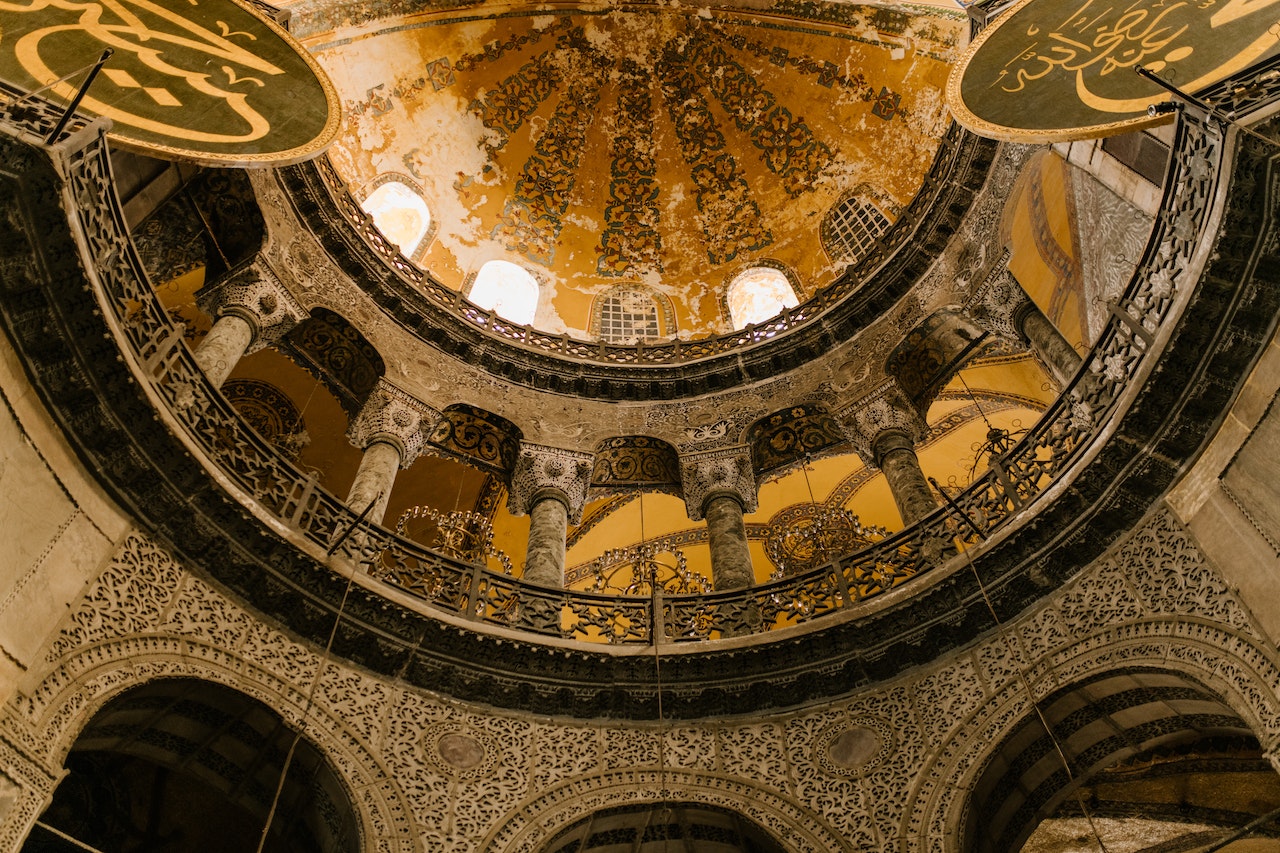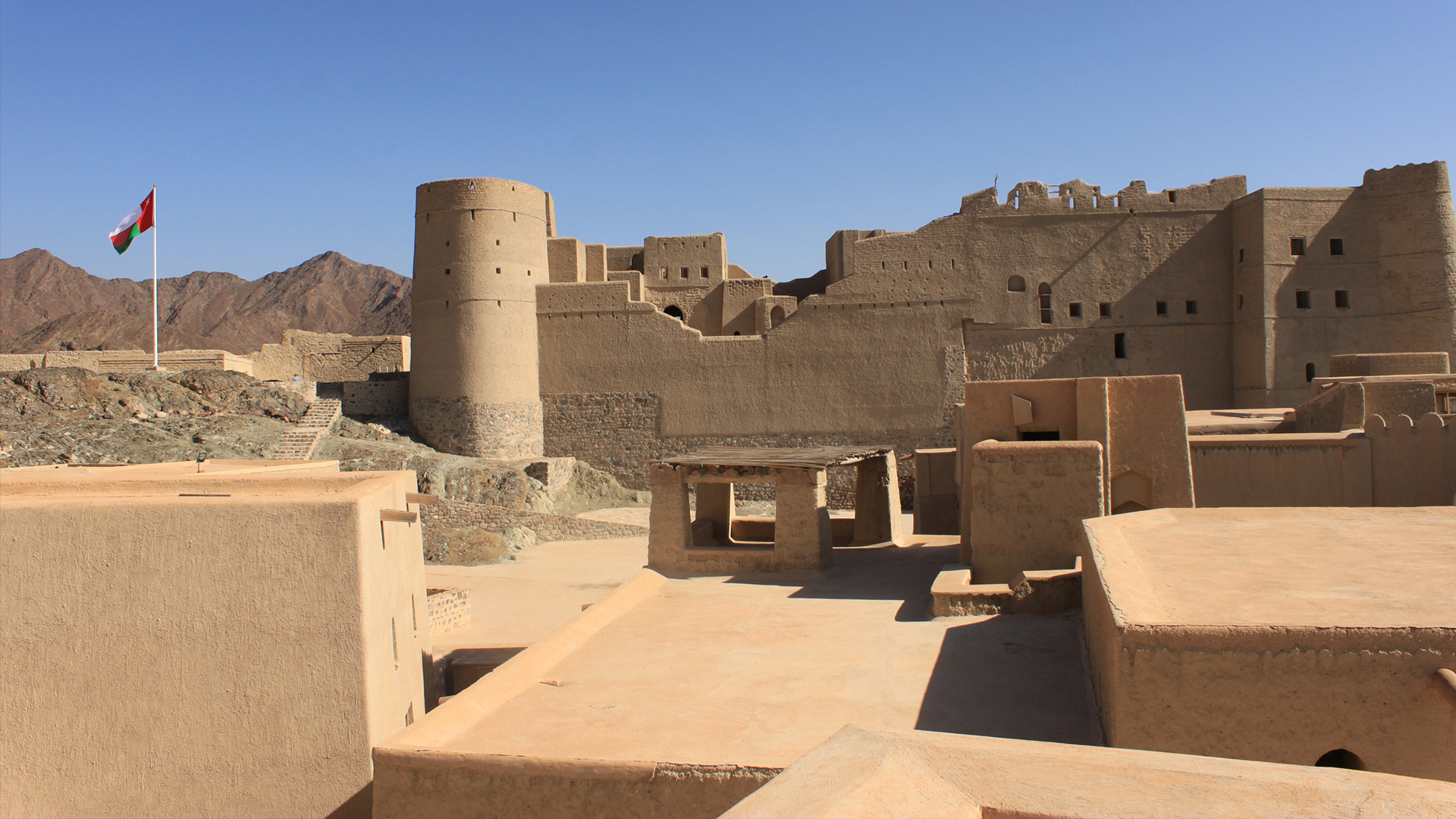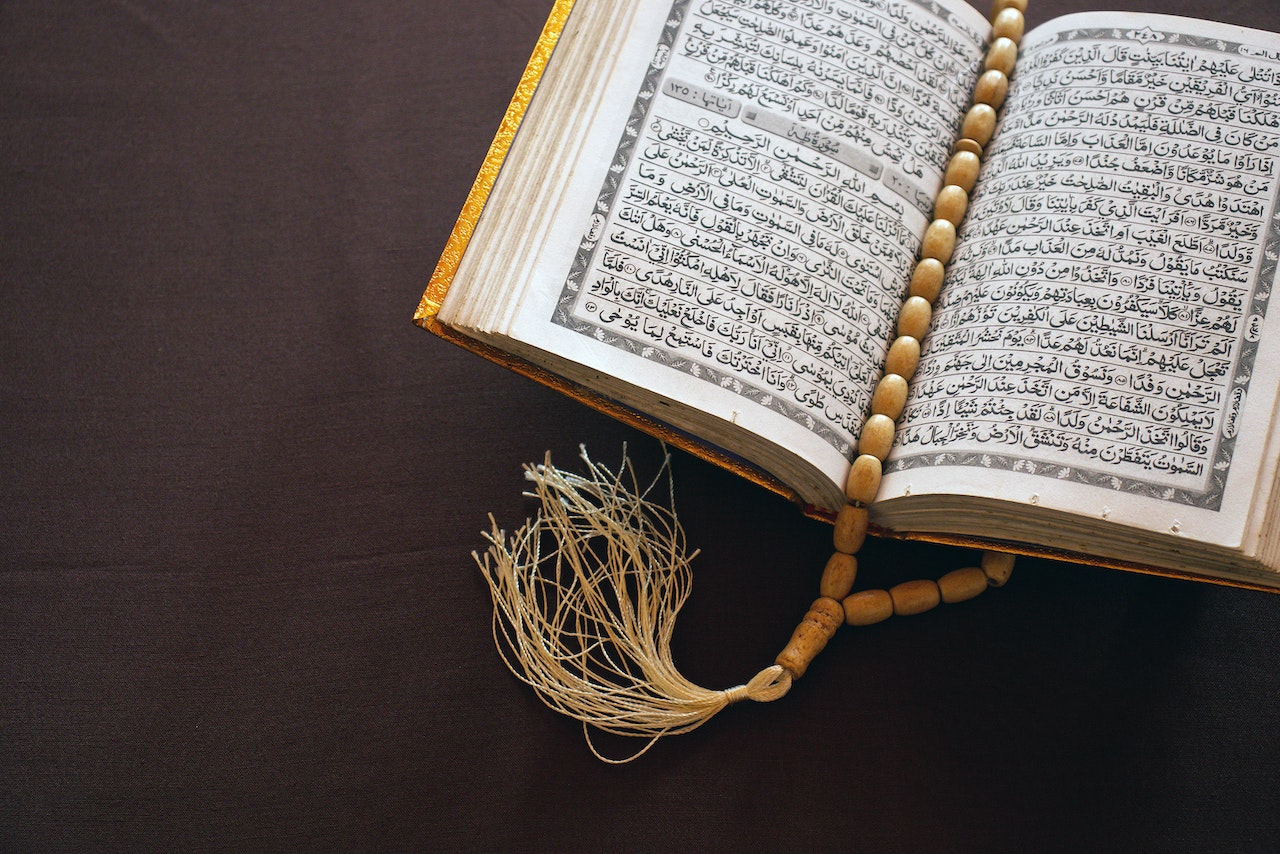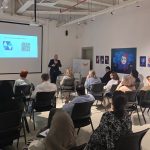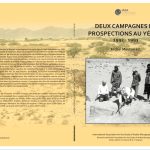Axes of Research
Coordination: Rémy Crassard (CNRS, CEFREPA)
Covering seven countries of the Arabian Peninsula (Kuwait, Yemen, Saudi Arabia, UAE, Sultanate of Oman, Bahrain and Qatar), CEFREPA’s geographical competence is one of the largest among those of French research centers abroad. It is also therefore rich and varied, covering periods ranging from prehistory to the Islamic period. Started in 1982 thanks to the creation of the French Center for Yemeni Studies (CFEY), which became the French Center for Archeology and Social Sciences in 2001 (CEFAS) then the French Center for Research in the Arabian Peninsula (CEFREPA) in 2021,
To interpret the vestiges of a past ranging from prehistory to the beginning of Islam, passing through the Bronze Age, the Iron Age and Antiquity, the various archaeological projects mobilize several disciplinary skills such as knowledge specific to ceramists, geographers, experts in hydraulic systems, numismatists, epigraphists, historians, geographers, botanists, restorers, topographers or draftsmen. Thanks to the cooperation of these disciplines, archeology manages to approach the human past as a total fact, of which all the variations and manifestations must be questioned. At the same time, the various projects, despite the specificities that set them apart, take into account, in the interpretations proposed, sometimes very extensive chronological sequences, ranging from the Neolithic to the Islamic period. The choice to work over the long term has proven to be fruitful in advancing knowledge of the history of the occupation of places and the management of resources by men. This is a relevant choice which brings a better knowledge of the stages of the evolution of the societies which succeeded one another within this immense space which is the Arabian Peninsula.
The projects carried out over the past few years have already revealed certain secrets, and no doubt have some nice surprises in store for us in the years to come. The discovery of the Camel Site in Saudi Arabia in 2016, the updating of the stages of the appearance of the caravan kingdoms in certain regions, as well as the better knowledge of the anthropological dimensions linked to the organization of the space between rites, artisanal productions , dwellings and the exercise of power: all these scientific advances lead us to abandon certain received ideas about pre-Islamic Arabia, and to no longer consider its history as synonymous with emptiness and aridity, like the desert which makes up a good part of it. On the contrary, the archaeological work shows the refinement of the material cultures present in the region (ceramics, drawings, architectural motifs, etc.), which breaks with the image of a rustic space, devoid of knowledge carried by men. The discovery of sites, graffiti, rock engravings or monumental sculptures shows to what extent the peoples present in the region have produced a material culture of great finesse. These aspects are corroborated by works on linguistic practices which underline the important presence of writing, something to which we did not pay attention by assimilating this space to the reign of orality. Thus, several inscriptions or graffiti in Arabic, Latin, Greek, South Arabian, Syriac, Aramaic or Nabataean make it possible to question the linguistic cultures which succeeded one another in this space, and to study the exchanges and borrowings that peoples may have had from different periods of their presence in this territory.
The new knowledge we now have thanks to the excavations and the resulting publications show how this space was at the heart of the human adventure, from the Neolithic to the Islamic period. It is clear that we are dealing with a space that was before the letter “connected” by trade, exchanges, the borrowing of architectural motifs, the adoption of artistic models, and the sharing of technical inventions. All this makes them complex objects of study, which force questions and oblige us to revise commonly accepted ideas, even to upset certain theses which, thanks to this new research, have become false or obsolete. Undeniably, this region was marked by the presence of several cultures that intersected, influenced each other and produced something unique. This makes it a heritage of considerable richness composed of several strata and crossed by many layers.
The recent focus on medieval and modern archeology also contributes to diversifying the activities of researchers, formerly centered on the ancient period, even the Paleolithic and the Neolithic. This openness to so-called “Islamic” archeology involves significant scientific and diplomatic issues, given the role it plays in the construction of national identities and in research and debates on the history of the beginning of Islam, which is experiencing significant expansion in the field of French Islamology. Beyond the interdisciplinary or multidisciplinary perspectives offered by this field of research, the projects carried out in the seven countries covered by CEFREPA have an identity that sets them apart and gives them specific objectives pursued during the excavations and the study of the explored sites. This is why the description of the different projects below is given by country.
It mobilizes the skills of historians, geographers, anthropologists, political scientists and philosophers wishing to examine the challenges faced by states in full transformation, particularly after the revolutions and social mobilizations that marked the Arab world and the Middle East from 2011. The research orientations concern both the knowledge of government mobilized by States to develop societies, and the political choices and decisions (diplomacy, peace negotiations, and military commitments) which have been decisive for recent developments, at the regional and international scale. Three privileged areas constitute the sub-axes embodying these different research orientations, which the members approach by taking into account the evolution of notions and concepts, social and historical roots, as well as the overall dynamics and the singularity of each particular case.
Foreign politics have been an important issue of differentiation between the States of the Arabian Peninsula for decades. From the 1990-1991 Gulf War to the diplomatic crisis between Qatar and its neighbors that began in June 2017 and then recently resolved, international issues structure rivalries and largely reshape alliances. Power rivalry within the Arabian Peninsula often yields to different forms of consensus and the development of common actions (particularly within the Gulf Cooperation Council), thus showing to what extent the regimes in place invent tools for political task and work for the establishment of new structures that will leave a lasting mark on the region. The development of empowerment strategies and the affirmation of divergent objectives and interests between the seven countries of the peninsula (Saudi Arabia, Yemen, Oman, Qatar, Bahrain, Kuwait and United Arab Emirates) is the subject of a literature of significant expertise which highlights the polarization around regional issues (ties with Iran, Israel and Turkey) but also ideological questions marked by the weight of tradition (support or not granted to political Islam).
Faced with this observation, the ambition of this sub-theme, focused in particular on the pivotal role played by diplomacy and the peaceful resolution of conflicts, is to analyze the decision-making processes in terms of foreign policies. Who really makes what is labeled as a “foreign politic”? Is the state the only actor? At the time of the privatization of certain public prerogatives and the opening of several countries (Saudi Arabia, United Arab Emirates, Kuwait), to the different forms of globalization, this question of centralization takes on particular relevance. Hence the interest of focusing on the geopolitical issues of this space which has always been the crossroads not only of several tensions and conflicts but also of numerous exchanges and cooperation.
II- Practices of war and arts of peace in the Arab-Muslim East: ancient readings and contemporary trends
Approached most often through the prism of the notion of “jihad” and the currents of jihadism, war in Islam deserves to be studied in its various causes and manifestations (social, political, economic) as well as in its many repercussions and variations (historical, memorial, psychological). Bringing together historians, anthropologists, sociologists, political scientists and philosophers, this sub-axis is also interested in a forgotten field that of diplomatic activities and the treaties which sought to set standards and precepts. The work carried out by the various researchers is interested in the phenomenon of war in the long term, and is oriented towards the achievement of a triple objective:
- 1- To wrest the study of jihad from its contemporary reactivations and tinkering curried out by several ideological currents, in particular those of Salafism and Islamism. If current events force us to pay some attention to these reactivations, at least for security reasons and because of their massive presence in the media, they must not however constitute screens preventing the scientific study of the war in the entire civilization of Islam, based on the corpus dedicated to it, and the variety of historical contexts and doctrines that may have marked it.
- 2- Do not be satisfied with theological-legal definitions of war, which indeed existed in medieval times as well as in contemporary times, and focus on other, often neglected, corpuses which address this phenomenon of a social, political and strategic point of view: literature of the Princes’ Mirrors, treatises on furûsiyya, history and chronicles of wars in Islamic lands, diplomatic letters and archives of relations between princes and states.
- 3- Studying the real history of warlike practices in order to get out of the illusory construction of an enemy always marked by his religious otherness, which will make it possible to de-theologize the approach to the theme of war in Islam. This will show, for example, how the notion of “jihad” was applied, by historians and chroniclers, to the civil wars that opposed Muslim princes. At the same time, researchers in this field are engaged in a global reflection that bears not only on the role played by weapons in conquering one power or defeating another, but also on the links between, on the one hand, the ethical dimensions of war and peace and, on the other hand, the different forms of violence that have prevailed from medieval times to the present day.
This field is interested in the norms, precepts and knowledge of government that mark the practices and theorizations observed in the Arabian Peninsula in a particular way and in the Arab world, more generally. It puts at the center of the reflection the discrepancies, noted since the Nahda, between ultra-modern political knowledge brought by the Europeans, and practices still determined by forms of management and administration dating back to the classical age of the Islam. It would thus be a question of analyzing the crisis of the assimilation of knowledge of governmentality which has generated crises of governability, which are still visibly confronted by several Arab countries. Crises made more complex on the one hand by the questioning of the State and its ability to regulate other spheres (social, legal, economic, individual), and revealed on the other hand by the blockages made to the consensual practices of the living together (in particular by the currents of so-called “political” Islam), which requires a global reflection on citizenship and on the different forms of transnational or supranational allegiance that are adopted by individuals and groups. To do this, one of the strong dimensions of this sub-axis consists in exploring the link between the new modes of government marked by the search for a certain horizontality between private or institutional actors, and the vertical and hierarchical modes inherited from old conceptions of government.
To address these different issues, three themes will be explored:
- 1- Analyze the different genealogies of government practices, from medieval times to the recent introductions of the “good governance” paradigm and the role of these practices in political and institutional choices and decisions.
- 2- To wonder about the transfigurations that the notion of citizenship has known. This is at the heart of many tensions and competitions between several forms of allegiance: tribal, religious, dogmatic, national and political. Its study allows us to see how the relations between rulers and ruled have been the subject of new perceptions and representations, and how certain constitutional, legal or political reforms have made it possible to develop this notion, in social frameworks marked most often by the presence of many non-citizens and where the offer of foreign populations is sometimes numerically superior to that of nationals.
- 3- Address the link between the notion of citizenship and the socio-economic dimensions of governance, particularly with regard to the focus of certain regimes on the security, well-being and comfort of citizens, which testifies to the significance of certain forms of the welfare state on the political orientations of many Arab countries, particularly those of the Gulf.
In order to grasp both the local and global issues of the organization of space and its contemporary representation in the Gulf context, this research focuses, among other things, on the modes of urbanization and territorial transformations by questioning the way in which reveal changes in space that are not only material and physical, but also social and symbolic. Through prisms as original as they are varied, such as artistic practices, individual and collective subjectivities, social mobility or urban planning and architecture, the research dedicated to these themes aims to draw lines of thought leading to understanding what characterizes these themes in particularly divided and multicultural contexts. Rural/urban transformation, identity processes, but also the appropriation of space, both public and private, by the various inhabitants of the Arabian Peninsula, are thus at the center of the thinking of researchers whose work falls under Axis III.
Although they have a past that has its roots in eras dating back to the medieval period and sometimes to antiquity, even prehistory, most cities of the Arabian Peninsula today are distinguished by the adoption of a development paradigm of neoliberal inspiration, open to the outside and resolutely turned towards the future. The coexistence of old urban models and ultra-modern plans is what strikes the observer of the urban worlds that have been developing for a little over half a century, in connection in particular with the oil industry.
Once important stages in the caravan trade, maritime trade and pearl trade, Muscat, Doha, Abu Dhabi, Manama, Kuwait City, or inland towns such as the Qasim and Ahsa oases, have become cities whose economic and financial activities are structured by the hydrocarbon industry. This peculiarity of the Gulf countries has led, in parallel and because of the planetary challenges posed by environmental issues, to the implementation of investment plans oriented towards the diversification of the economy, thus making the energy transition a major challenge for the Middle East.
Post-oil plans are not new. The recipes put forward to remedy the effects of the oil counter-shock in the 1980s and 1990s are still those that occupy the members of the Organization of the Petroleum Exporting Countries (OPEC): the limitation of production by means of quotas in order to raising prices, the reduction of the role of the state and of public expenditure in the economy, the nationalization of the workforce (the national preference) and the privileged role granted to the private sector to diversify national economies.
These economic dimensions guide the development of urban worlds and their links with agrarian worlds and the space of the desert. Despite delays and the abandonment of several of Masdar’s most “renewable” measures at the gates of Abu Dhabi, the Neom project in northwestern Saudi Arabia is modelled on a high-tech and green energy bubble. Because it is combined with the burial of the Rentier state, the energy transition is everywhere more profound than a set of purely economic reforms; it shows to what extent the economic dynamics in the Arabian Peninsula are associated with the social, cultural and political reconfigurations that they generate at the national and regional scale.
Today, the Arabian Peninsula stands out as an international hub where men, women, goods, cultures and capital converge. Its rapid modernization in the 20th century accelerated the process of globalization and the circulation of models of society, economy or urban planning. The very rapid urban development promotes unprecedented demographic growth: Dubai, for example, had 1.5 million inhabitants in 1966. Today, 3 million people live in this “global city”, of which only 12% are Emiratis, the rest being immigrant workers.
The fact of migration and the cultural exchanges it facilitates make it necessary to reflect on the questions of cultural transfers, otherness and diversity in the global world. These exchanges are thus taken as revealing the tensions caused by the questioning or even the break-up of ways of life and representations, as well as explanatory elements of the evolution of peninsular societies towards an increasingly trans-nationality more marked. Attached to the exploration of urban changes by articulating them to mobility and migration, the research under this axis works to understand the mechanisms of construction of global cities, and more particularly, within world cities, it seeks to reflect on the concept of cosmopolitan cities and to grasp the empirical manifestations of cosmopolitanism through a multidisciplinary and comparative approach.
The research carried out at CEFREPA in this perspective inquires also the public policies that strongly determine the relationship to public space, the reconfigurations of gender relations, generational differentiations, in addition to local affiliations (sociolinguistic, ethnic, religious, etc.) in cosmopolitan contexts. Migration regimes and the constitution of identity communities marked by phenomena relating to globalization are also a priority area of investigation for this axis. Finally, it is a question of grasping the way in which subjectivities are constructed, through the shaping of daily spaces and of oneself, which are themselves highly particularized.
Beyond national or regional borders, the study of mobility makes it possible to grasp the socio-cultural mechanisms that connect the individual, society and space. This axis therefore helps to create a space for intellectual discussion on this theme which is still little known in France and which is nevertheless strongly debated in many countries (United States, Great Britain, Germany, Italy, Australia for example): cosmopolitanism as a specific analysis of living together and the functioning of social ties in global cities.
In recent years, some cities in the Arabian Peninsula have aspired to play a new role, that of becoming a leading artistic and tourist destination, and of playing the role of a cultural “hub”, a meeting place for artists from the region but also of the world. Initiated by Dubai, this process is reproduced in Qatar, Kuwait or Saudi Arabia, with the proliferation of museums, galleries, centers for the promotion of contemporary art, often in peripheral and industrial urban spaces, which has favored the creation of an artistic scene in the Gulf region and above all of an art market which is in full expansion. From Art Dubai, the contemporary art fair created in 2006, to the Universal Exhibition inaugurated in 2020, the field of visual arts indeed seems to want to contribute to changing not only the image of the city but the city itself.
While contemporary art has experienced unprecedented growth in the Arabian Peninsula for several years, the literature on the subject remains surprisingly insufficient. The development of large-scale museum parks in the United Arab Emirates and Qatar has helped draw the attention of researchers to the different dimensions – political, economic, geopolitical and social – of these projects. In contrast, the history of contemporary art throughout the region, the structuring and evolution of markets and artistic scenes, the multiplication of public institutions and private initiatives, just as current artistic practices and movements do not receive the same attention. However, in addition to the purely historical and documentary interest on this subject, contemporary art and the aesthetic conceptions that underlie it constitute a relevant entry point for understanding and analyzing the recent changes in this region.
This field of research thus aims to contribute to the writing of the history of contemporary art in the Arabian Peninsula, in particular in connection with the study of space and its cultural, aesthetic and symbolic representations, the aim being to propose theoretical and conceptual tools to approach it in all its complexity. Resolutely multidisciplinary, it brings together both researchers and professionals – notably artists, art critics and exhibition curators – from the worlds of contemporary art in the region.
Research devoted to the visual arts are also committed to describe the trajectories of artists and artistic practices while linking them to the political and historical context of the Arabian Peninsula, with the aim of questioning the relationship between the State, its institutions and the art worlds. In countries where state patronage is central to the emergence of artistic scenes, research in this sub-axis focuses particularly on the study of a country’s cultural policies, to question artists’ views on the state and the state’s hold over art.
Axis IV of the research conducted within CEFREPA nourishes the ambition to answer these questions by giving a clear idea of the heritage policies carried out in the different countries of the region, their intellectual foundations and their implementations and achievements. It also aims to show the issues of memory and identity that the question of heritage conceals, in a region that is often reduced to religious and denominational labels. Is heritage not at the heart of a historical turning point that is taking place in an underground but truly effective way, so much does it involve a redefinition of identity and memory, of the past and the present?
Based on the state of the art and on specific examples, the aim of this first research component is to explore the forms of awareness of the interest of heritage in all its forms, material and immaterial, ancient or medieval, in the countries of the Arabian Peninsula. Heritage is used to promote the values carried by the cultures that have succeeded each other in a given territory. Its preservation also conceals a gesture of safeguarding the values of peoples, their ways of representing life, of conceiving beauty or of mobilizing intelligence. This first sub-section also plans to explore the uses of the concept of sustainable development within the literature produced in the countries of the Arabian Peninsula, and the way in which it is articulated with the preservation of heritage, inserted in the strategic visions of the evolution of societies, or applied to the transformations undergone by urban space.
If heritage can be the marker of a particular culture or the illustration of a unique civilization, it can also bear witness to the dissemination of cultural models shared by several peoples and territories at a given moment in history. This dissemination opens onto the notion of interculturality which is useful for reflecting on the evolution of techniques, modes of production, rites and beliefs, even the organization of social and political space. Hence the importance of taking heritage into account in both its identity and memory dimensions. The intercultural space fits into the interstices of this double challenge, that of preserving one’s own history irreducible to other peoples, and that of reciprocal influences, borrowings or dissemination of models commonly shared by several groups.
Among the flagship projects under this component, mention should be made of the setting up, by Fatima Al-Baydani, of a collection of recordings, the result of a quarter of a century of collecting the oral literary heritage of Yemen, which also counts stories, nursery rhymes, poems, songs, proverbs, dances and games from all regions of the country. The whole is the subject of an ongoing publication on popular Yemeni oral heritage.
In connection with the libraries of the countries of the Arabian Peninsula, CEFREPA has the ambition to initiate a systematic work of cataloging manuscripts from the medieval period, their digitization and the dissemination of the knowledge they contain through editions reviews and translations in French and English.
Some work relating to the study of the textual heritage of the countries of the Arabian Peninsula has already been undertaken, as evidenced in particular by the HUNAI project led by Éric Vallet (University of Strasbourg) and whose aim is to form a coherent corpus of major works from the abundant textual production of premodern Arabia, and to integrate it into all the Arabic digital resources available in Open Access, in addition to developing historical and linguistic studies and analyzes based on textual data mining applied to coherent corpora resulting from this production. The first stage of this project was launched in June 2022-November 2023, with the objective of establishing a pilot corpus on Rasûlid historiography (626-858/1229-1454).
Other projects dedicated to the formation of electronic corpora on the Mirrors of Princes or the art of Furûsiyya have been undertaken by other CEFREPA researchers, in collaboration with institutions and national libraries in the countries of the Arabian Peninsula. They aim to enhance this textual heritage by relying on a thematically homogeneous corpus and making it possible to exploit textual data with a view to studying the evolution of a political genre (equestrian art, the art of war, government treaties) or to probe the establishment and development of the major concepts of Arab-Muslim political thought.
The constitution of archives is one of the most important vectors for questioning knowledge and cultural practices, their circulation and transmission, as well as the processes of heritage and their role in the construction of individual and collective identities, local, national or regional. Hence the extreme interest accorded to it by the researchers who collaborate within CEFREPA, in connection with the methods of archiving and the exploitation of documents or simply to help in the consultation of French archives dedicated to the countries of the Gulf region. The exhibition “France and Kuwait: a friendship of more than two centuries”, inaugurated on May 29, 2022 at the National Library of Kuwait recently showed this interest and the important perspectives opened up by work in this field. Initially designed in 2020 as part of the CEFREPA research project entitled “@rchives d’@rabie” and led by Luc Chantre (University of Rennes 2), in connection with the celebration by the Embassy of 60 years of the French-Kuwaiti friendship, the exhibition explored known documents, while presenting unpublished archives that show the depth of the relations between the two countries and the interest in studying them and getting to know them better. The “@rchives d’@rabie” project aims overall to promote French archives relating to the Arabian Peninsula, mainly kept in the diplomatic archives centers of Nantes and La Courneuve in the form of anthology publications, translations and exhibitions aimed at a wider audience. In addition to the Exhibition on France and Kuwait, it has already given rise to an important publication on the pilgrimage in French sources.
Another project, “Ar@chives_Kuwait”, led by Anahi Alviso-Marino, and aimed at establishing an inventory, digitizing, and then translating certain documents was created in 2016 in order to study the personal archives of certain artists and to conduct research on artistic practices while linking them to the political and historical context of this region. As for the project entitled “Archives of medieval Yemen in the Rasulid era”, it concerns an important and invaluable corpus of administrative archives dating back to the Rasûlid period, relating both to the management of the State and to some of the major religious foundations (waqfs). Several collections of archives have been published in the form of annotated editions by Mohammed Jazem, the latest in progress being Al-Waqfiyya al-ghassâniyya.
The Renewal of Religious Thought in Contemparary Islam.





